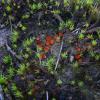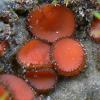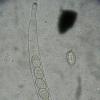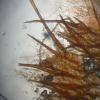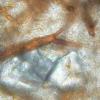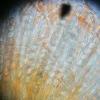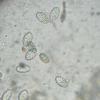
15-05-2012 14:23
 Yannick Mourgues
Yannick Mourgues
Voilà un asco très variable en forme : hymenium

15-05-2012 12:34
 Wilhelm De Beer
Wilhelm De Beer
Does anybbody perhaps have access to the following

13-05-2012 00:03
Bonsoir,J'ai trouvé trop mignon ce petit coelomyc

02-05-2012 15:11
Bonjour, Juste une question concernant cette espè

13-05-2012 15:34
 ghania azouaoui
ghania azouaoui
Hello friendly mycologists.¶ it is my first inter

11-05-2012 19:59
Dear friends:I'm lost with this black pyrenomycete

12-05-2012 20:13
 Alessio Pierotti
Alessio Pierotti
ANCORA ALLA RICERCA DI BIBLIOGRAFIA...QUALCUNO HA

09-05-2012 13:25
 Yannick Mourgues
Yannick Mourgues
Bonjour à tous.Je cherche :Jahrbücher des Nassau

09-05-2012 09:17
 Alessio Pierotti
Alessio Pierotti
Sempre per la revisione del materiale in PI, qualc

08-05-2012 21:20
 Yannick Mourgues
Yannick Mourgues
Bonsoir à tous.J'en perds mon latin : lequel des

:-)
When making micropics, make sure to use Cotton Blue preparation, especially with mature ascospores. The apothecium whose sections readily ejected spores when observed in tap water with no pressure applied should be used for subsequent CB preparation so that you can be sure you are dealing with completely developed spores. It is critical for identification of an Scutellinia species. When making CB prep. make sure you also include finely sectioned margin. The contrasted marginal hairs would reveal also the structure of their bases - also crucial for identifying the species!
I will also send you an e-mail soon regarding our older issue!
Cheers,
Neven

Is it found in Netherlands ? Near sea ?
After your first microscopic research, is it possible to ask you a part of your collection ?
We'll look forward your microphotos.
Read you soon,
Beñat
Unfortunally i do not have CB yet, hopefully thursday. But i made micropictures anyway. The ascus is 275 long. SPores seem to be larger then mentioned, 22.5 * 12.5. The hairsbase is bifurcate
ps Neven i loke forward to youre mail!

It's difficult to say anything just with this. Scutellinia is a difficult genus. It is important to have :
- sporal ornementation (in CB, like Neven said)
- hairs measures
- hairs base (here, we can see bifurcate but are you sure that all have bifurcated bases ?)
Your spores measurements can't help us because 20-22 x 12 are the most common measures in this genus...
Read you later,
Beñat
